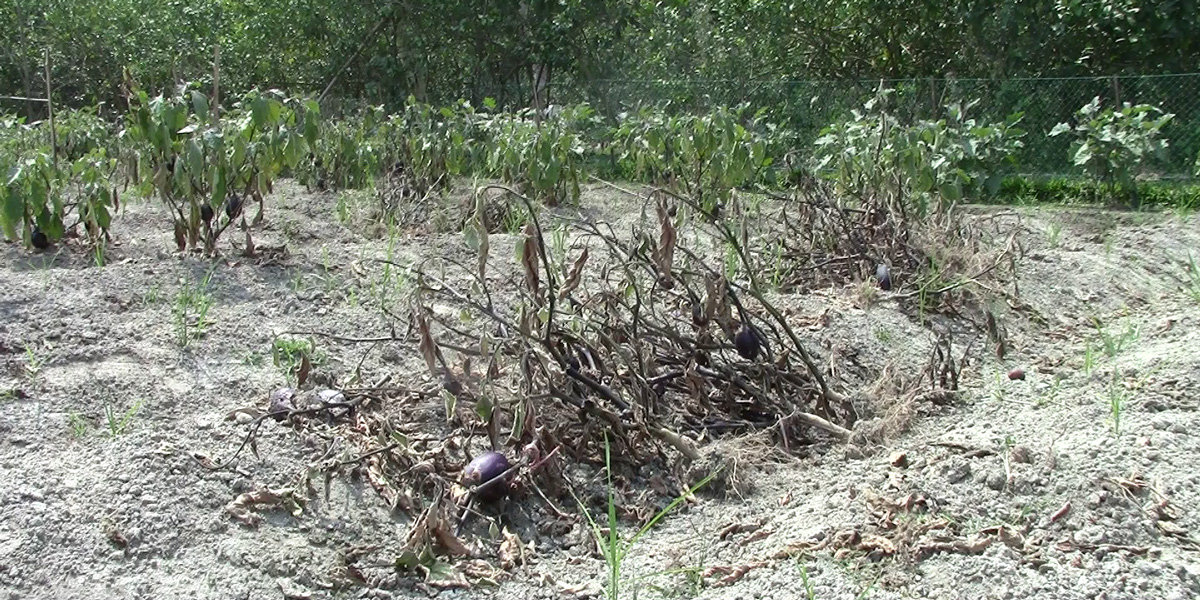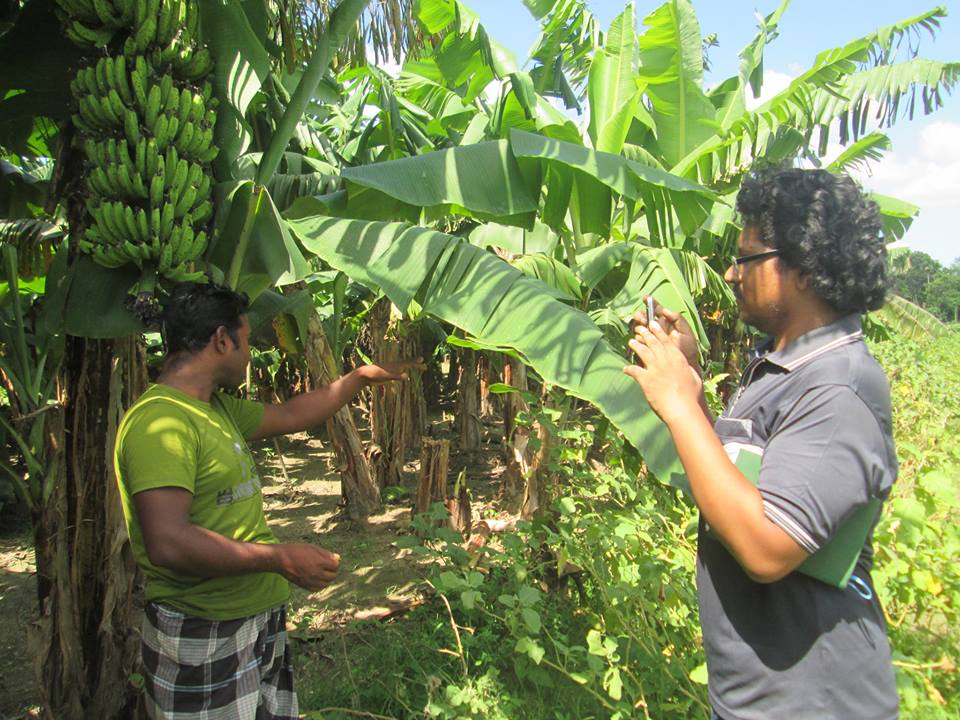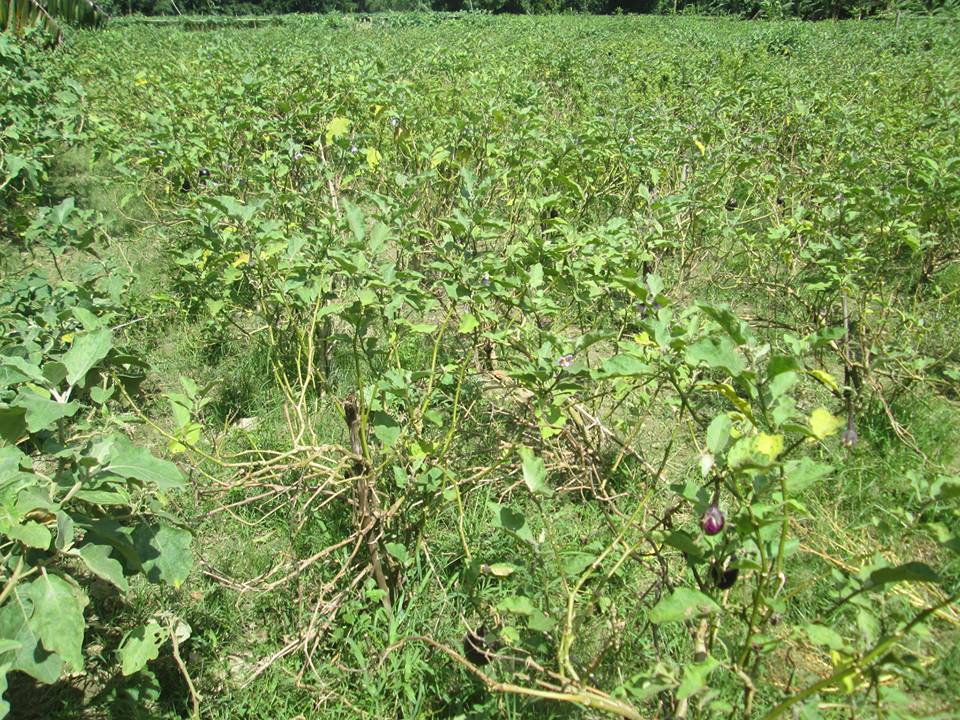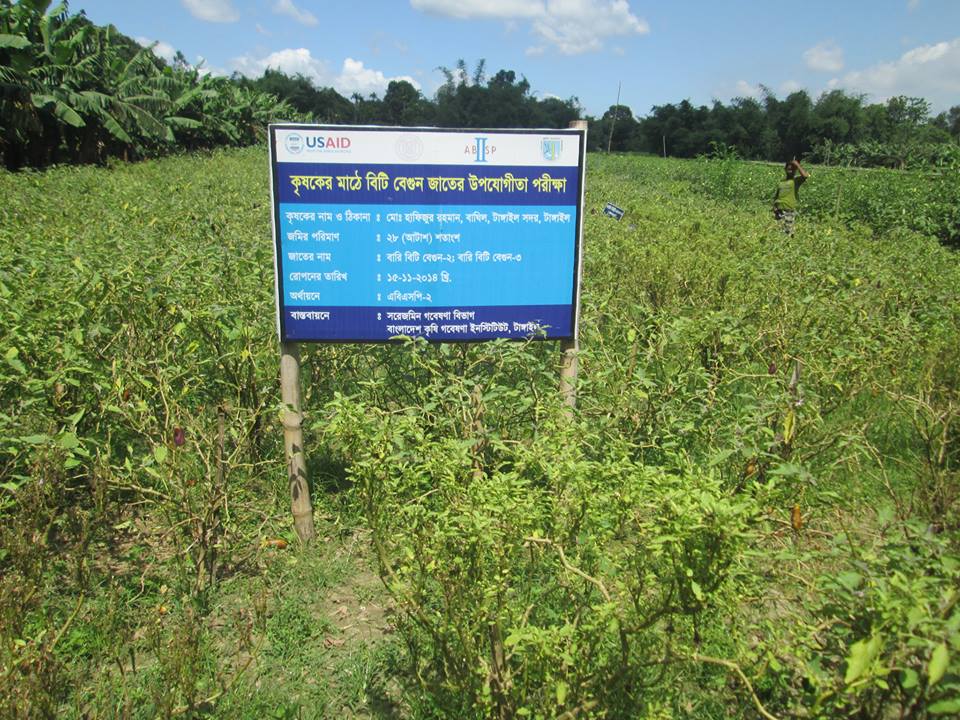
Bangladeshi journalist Faisal Rahman replies to allegations in a Cornell University Alliance for Science article that he misreported the experience of a farmer growing Bt brinjal and breached journalistic ethics
Some allegations were brought against me in an article, titled “Bangladeshi Bt brinjal farmer speaks out in GMO controversy”, published by Cornell Alliance for Science in its website on July 12, 2016. The allegations were related to part of a GMWatch article titled, “Propaganda over facts? BBC Panorama and Bt brinjal”, published on July 28, 2015. The part in contention was based on my conversation with Hafizur Rahman, a farmer of Tangail district, that took place on June 20, 2015 in and around his Bt brinjal farm.
Before commenting on the allegations, I must point to the fact that the issue I pointed to about Hafizur as reflected in the GMWatch article was not related to whether Hafizur was “dissatisfied” (in the Alliance’s wording) with his GMO crop. I visited his Bt brinjal plot because of his interview with BBC Panorama (details are in the GMWatch article, for which I collaborated with its author Claire Robinson on voluntary basis). As a journalist who has been following this issue over the last three years, the BBC Panorama interview made me curious. I also co-directed a film with three others on the issue, Btbegun Bishambad or Bt Brinjal In The Dock.
As was mentioned in the film, the film makers visited 16 of the 108 farmers who were provided with Bt brinjal seedlings in the second round of farmers’ cultivation of the crop under the supervision of the Bangladesh Agricultural Research Institute (BARI). Also mentioned in the film was our finding that except for one, all the farmers we visited had crop failure. The one exception was actually Hafizur, although we found out, and we have the evidence, that most of his plants started dying out prematurely.

Photo 1: June 20, 2015. Conversation between Hafizur Rahman and Faisal Rahman near the former's Bt brinjal field in Tangail district. Photo by Delowar Jahan.
The official planting date in Hafizur's field was November 15, 2015. On June 20, Hafizur admitted to us (me, Faisal Rahman; Delowar Jahan of daily Shokaler Khobor; and Mazedur Rahman, a student of Mawlana Bhasani University of Science and Technology, Tangail) that he stopped tending to those plants from about one and a half to two months previously. He also told me that he harvested the crops for about three months. At another point during our conversation, he also admitted that some plants in the field died out as early as three months after planting. I was quoted in the GMWatch article based on these statements. The GMWatch article reads: “Tellingly, Hafizur Rahman said he had ‘stopped taking care of his Bt brinjal field about one and a half to two months ago’ because the plants had been slowly dying out, from just three months after planting.”
However, the Alliance article is now claiming, "Hafizur denied having told the UNB reporter [me] that he was dissatisfied with the performance of his Bt Brinjal crop." First, my question is why the Alliance is representing me wrongly by mixing up Hafizur's satisfaction/dissatisfaction with the issue of plants dying out prematurely.
The Alliance article quoted Hafizur: "I did not say this. When the plant comes to the end of its life, it dies. My Bt brinjal plants died when they were finished fruiting. Everything comes to an end, doesn’t it? Will the brinjal plants stay throughout the year? That’s not possible."
Let me again point to the fact that at one point during our conversation Hafizur admitted he stopped taking care of the plants one and half to two months ahead of my visit. Which means between about five months and five days to five months and twenty days after the official date of planting (November 15, 2016). If we consider that most of the local brinjal plants can survive two to three years, if not uprooted, and that in commercial cultivation farmers generally let the plants live for at least seven months after planting, Hafizur's comment attests to the fact that the plants died out prematurely if we compare their lifespan with that of the local varieties. So Hafizur's explanation to the Alliance is questionable. Even more questionable is his claim to the Alliance interviewer that “my Bt brinjal plants died when they were finished fruiting”. I have photos taken during my visit to Hafizur's farm that show of a lot of dead/dying plants with a lot of immature/rotten/hard fruits.

Photo 2: June 20, 2015. Rotten fruits of BARI Bt Brinjal 2 (Bt-Nayantara) variety at Hafizur Rahman's field in Tangail. Photo by Delowar Jahan.

Photo 3: June 20, 2016. Rotten fruits hanging from dead or dying plants of BARI Bt Brinjal 3 (Bt-Kajla) variety at Hafizur Rahman's field in Tangail district. Photo by Delowar Jahan.
My suspicion was intensified when in the YouTube video attached with the Alliance article, Hafizur denied that he told me his plants started dying out slowly from three months after planting. Moreover, at one point in our conversation on June 20 2015, he mentioned that he had stopped taking care of the field from about one and a half to two months previously – which means about five months and some days after the official date of planting. In his interview with the Alliance, he neither denied nor accepted that specific phrase. In fact, the Alliance’s interviewer omitted that exact part of Hafizur’s quote when translating it back to Hafizur, as we see in the Alliance video (around 7:16 minutes of YouTube timeline). Thus the Alliance has not disproved or countered this statement of Hafizur’s as reported by me.
I jotted down the statement of Hafizur (stopped taking care of the plants one and a half months ago, plants dying out slowly after three months) and conveyed it to GMWatch. Now Hafizur is denying it and explaining in the Alliance video that his plants started dying out after five-six months – that’s two months before the fruiting plus three months of harvest. It has been about one year since the publication of the GMWatch report, and after a search on my computer, I found video records where Hafizur's statement about stopping taking care of the plants about one and a half to two months ago, and about harvesting brinjals for about three months, is confirmed.
When I wrote to GMWatch about the findings from my conversation with Hafizur, I considered his statement that the plants died after three months after planting to be more correct compared to his other statement that he harvested the fruit for three months. In Bangla, Hafizur used the word 'tulsi' [a verb meaning to pick up something], and if the speaker is not specifying whether the three months exclude the one and half to two months of pre-fruiting, the statement can mean a total of three months of plant life.
Journalistic ethics
In this context, at another point of the Alliance interview, Hafizur is reported as saying that I (“the UNB reporter”) had “shared anti-GMO materials with him in an attempt to persuade him to become critical of the technology, a serious breach of journalistic ethics”. I categorically deny that I, or any of those who accompanied me, gave any book or material, except my business card, to Hafizur or any other Bt brinjal farmer I visited.
So what now will be the way to clear up the confusion around the claims by me, based on Hafizur’s original statement to me, and Hafizur’s later and apparently different statement to Alliance interviewers? The Alliance should be able to produce unambiguous evidence and an unambiguous statement – yet failed to do so. That is why I am not convinced by their report.
The Alliance article also raised questions about a UNB report, “Bt brinjal turns out to be ‘upset case’ for farmers”, authored by me and dated March 22, 2015. The Alliance writer summarised the UNB report's claim by mentioning that the report said: "numerous Bt brinjal farmers throughout the country had also suffered failed crops”.
However, this summary is inaccurate. The introduction to the UNB report said: "The cultivation of genetically engineered Bt Brinjal in the country’s several districts has cost the farmers their fortunes again this year [the second season of Bt brinjal cultivation under BARI, ie, 2015] as the plants have either died out prematurely or fruited very insignificantly compared to the locally available varieties."
BARI rejoinder confirms problems with Bt brinjal
Notably, BARI issued a rejoinder to the report. In that rejoinder, BARI responded to my claims of 'premature death' and 'very insignificant fruiting' by revealing their own account of the death percentage of plants in some of the fields, without mentioning in which respect the UNB report differs with those statistics. To my satisfaction, the official statistics provided by BARI proved all the allegations raised by the UNB report to be accurate.
For example, the BARI rejoinder said, “At Comilla, Bt Brinjal plots of Md. Ali and Dilip Kumar was affected and all the seedlings died due to heavy shower during November [which is only days after the official planting of the seedlings].”
At another point, it says, "Md Harun Mirza [of Comilla] had 424 plants in 18 decimal land and harvested 193 kg brinjal until 22-03-2015. Md Abul Hayet of Narsingdi planted 380 seedlings in 14 decimal land but about 45% of plant died due to bacterial wilt."
The UNB report was based on spot visits to 12 Bt brinjal fields in three districts as well as telephone conversations with 20 more Bt brinjal farmers in other parts of the country in February-March, 2015. The experiences of 32 farmers out of the 108 farmers, who planted Bt brinjal in the second season under the Cornell University-led project, should be taken seriously, as 32 out of 108 is a statistically significant number.
In conclusion, Cornell’s Alliance for Science, as a supposedly scientific organisation, should be able to present unambiguous evidence before raising an allegation against anyone.










